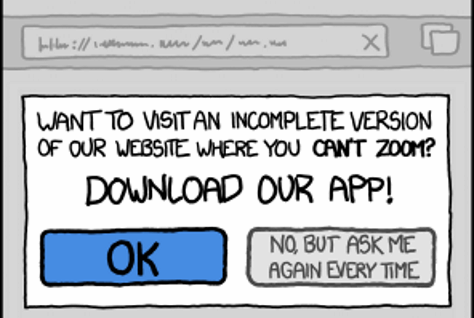When Writing Code Means You’ve Failed
I was chatting with a fellow developer yesterday, who recently adopted the very cool Busy Box ASP.NET progress indicator that I recommended:
We often need to provide a user message informing the user that their request is “processing.” Like the hour-glass mouse pointer lets the Windows user know the system is busy processing their last request, I have a simple, clean, and effect solution to providing this on web pages: The BusyBox Demo
He was quite pleased with the results, as their app has to churn through some HR queries that take in excess of 30 seconds even after hand optimization. The psychological effect of a progress indicator is quite profound:
In cases where the computer cannot provide fairly immediate response, continuous feedback should be provided to the user in form of a percent-done indicator [Myers 1985]. As a rule of thumb, percent-done progress indicators should be used for operations taking more than about 10 seconds. Progress indicators have three main advantages: They reassure the user that the system has not crashed but is working on his or her problem; they indicate approximately how long the user can be expected to wait, thus allowing the user to do other activities during long waits; and they finally provide something for the user to look at, thus making the wait less painful. This latter advantage should not be underestimated and is one reason for recommending a graphic progress bar instead of just stating the expected remaining time in numbers.
My Busy Box recommendation came after that team made several abortive attempts to implement different kinds of progress feedback. And this got me thinking: sometimes, writing code means you’ve failed. So much of what we do already exists, and in more mature, complete form. The real challenge in modern programming isn’t sitting down and writing a ton of code; it’s figuring out what existing code or frameworks you should be hooking together. This is also something Scott Swigart has observed:
Venkatarangan points out all the stuff that Sauce Reader uses, showing that in software development today, 1/2 the work is finding the building blocks, and the other 1/2 is writing the glue.
The real development skill is correctly identifying which half is Legos and which half is glue.









